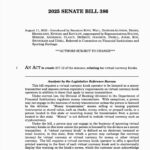How One Trader Turned $125K into $43M on Ether — and What You Can Learn from It
A cryptocurrency trader successfully transformed a $125,000 deposit into one of the most significant Ether positions ever recorded on Hyperliquid. Over a span of four months, they compounded each gain into a single Ether (ETH) long position, ultimately managing more than $303 million in exposure. At its highest point, their equity soared to $43 million. When the market started to reverse, they fully exited the trade, securing a realized profit of $6.86 million, which equates to a 55x return on their initial investment.
This scenario highlights both the incredible potential of aggressive compounding and leverage, as well as the ease with which the situation could have unraveled in the other direction.
Did you know? Ethereum’s dominance in decentralized finance (DeFi): As of July 2024, Ethereum was responsible for about 59.2% of the total value locked (TVL) across all blockchains, with DeFi’s TVL exceeding $90 billion.
The Journey from $125,000 to $43 Million
Back in May, the trader deposited $125,000 into Hyperliquid and initiated a leveraged long position on ETH. Instead of securing early profits, they reinvested every dollar back into the position, gradually increasing the size as the price moved in their favor.
In just four months, the position escalated into a $303 million long. At the pinnacle of the rally, their account indicated over $43 million in equity, showcasing a 344x paper return on the initial deposit.
However, the markets can shift rapidly. In August, amidst increased volatility and significant selling from major ETH holders, the trader unwound 66,749 ETH longs. This exit locked in $6.86 million; although it was a fraction of the peak paper gains, it still represented a 55x return.
Why It Worked: Compounding with Leverage
Two key factors drove this remarkable success: compounding and leverage. They facilitated exponential growth by recycling every gain back into the same trade. Each success funded a larger position, while leverage amplified the effect, speeding up both risk and reward.
Timing also played a critical role. While the trader was compounding, large holders began to reduce their exposure, and US spot ETH exchange-traded funds (ETFs) experienced $59 million in outflows, breaking a months-long trend of inflows. These signs of declining demand likely influenced their decision to exit before the correction worsened.
The result was a strategic alignment of an aggressive approach with evolving market conditions—an instance where compounding, leverage, and prompt exit strategies converged to yield an extraordinary result.
Did you know? In DeFi lending, the average leverage across major platforms typically ranges from 1.4x to 1.9x, comparable to traditional hedge funds. In contrast, the Hyperliquid trader likely operated at 20-30x leverage, significantly higher than average.
Why It Could Have Gone Wrong
While the upside was remarkable, the strategy came with substantial risk. Leveraged trades rely on strict margin thresholds, and a market downturn can lead to rapid unraveling. A single price fluctuation could wipe out months of gains.
Recent examples illustrate this risk. In July 2025, cryptocurrency markets experienced $264 million in liquidations in a single day, with Ether longs alone suffering a loss exceeding $145 million as bearish pressure cascaded through positions. For anyone aggressively compounding, such a market movement could be catastrophic.
The trader’s timely decision to exit was the sole reason their story concluded with profit. Many others employing similar high-risk strategies on Hyperliquid were not as fortunate. Reports indicated a trader, Qwatio, who booked $6.8 million in profits, ultimately suffered a $10 million loss.
Compounding and leverage offer pathways to substantial returns but magnify every vulnerability in your strategy.
Did you know? Hyperliquid notably turned down venture capital funding, dedicated 70% of its tokens to the community, and reinvests all platform revenue back to users, boosting HYPE token value growth into the top 25 cryptocurrencies by market capitalization.
What Can Be Learned?
- Compound with caution: Reinvesting profits can accelerate growth but has risks. Gains build on themselves, and so do mistakes.
- Have an exit plan: The trader secured $6.86 million by cashing out when signals emerged. Without a well-defined exit strategy, paper gains often remain just that—on paper.
- Respect leverage: Leverage amplifies outcomes in all directions. Even minor fluctuations in ETH can trigger liquidation on substantial positions.
- Read the market backdrop: Broader signals are significant. Whale selling and $59 million in ETF outflows in mid-August indicated cooling sentiment, supporting the case for stepping aside.
- Think in scenarios, not just upside: Always stress-test. Consider what happens if the price drops by 20% or even 40%. Your margin must withstand challenges, as profits only count if you remain solvent through downturns.
- Treat leverage as a tool, not a crutch: When used sparingly with stop-limits or partial de-risking, it can enhance trades. Reckless use leads quickly to disaster.
This trader’s experience underscores the opportunities and dangers present in DeFi trading on platforms such as Hyperliquid. Fueled by its own high-performance layer 1 (HyperEVM) and an on-chain order book, Hyperliquid processes trades at speeds comparable to centralized exchanges—a feat that many traditional decentralized exchanges (DEXs) continue to struggle with.
However, that scale introduces fragility. The JELLY incident, where governance had to step in to safeguard the insurance pool, revealed how swiftly cross-margin risk models can fail under pressure. While the intervention prevented losses, it raised uncomfortable concerns about centralization, transparency, and whether these platforms can truly be deemed “trustless.”
Broader lessons also emerge. Institutional capital—ranging from ETFs to corporate treasuries—is beginning to influence price flows in Ether, compelling retail traders and whales to react more promptly to outside pressures. Meanwhile, strategies previously confined to centralized venues are moving on-chain, with traders utilizing multimillion-dollar leverage straight through DeFi protocols.
This evolution presents platforms with an urgent need for enhanced safeguards: more robust liquidation engines, stricter margin controls, and governance structures that foster confidence rather than doubt.
This case illustrates how infrastructure, governance, and institutional investment are transforming DeFi markets. For traders, the takeaway is unmistakable: while tools are becoming more powerful, the margin for error is rapidly diminishing.



















